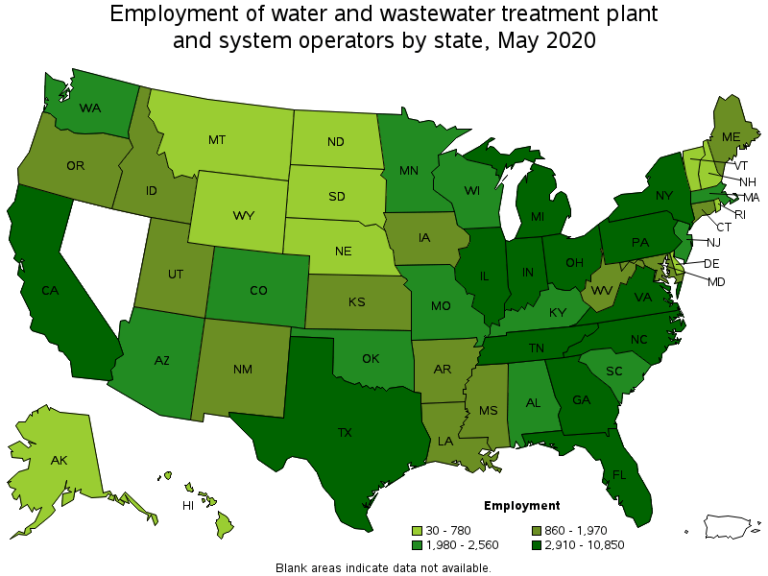
In a nutshell, As of October 2023, there are approximately 675,775 jobs available in public utilities in the United States, according to the Bureau of Labor Statistics. This number is expected to grow by 1% in the coming years, which is faster than the average for all occupations.
Public utilities provide essential services to millions of Americans each day, such as water supply, electricity, natural gas, and sewage removal. The industry is also a major employer, with jobs available in a variety of fields, including engineering, customer service, and maintenance.
Here is a list of some of the most common jobs available in public utilities:
- Electrical engineers
- Water treatment plant operators
- Customer service representatives
- Power line workers
- Plumbers and pipefitters
- Mechanical engineers
- System operators
- Meter readers
- Accountants
- Human resources specialists
- Information technology professionals
What Are Public Utilities Jobs?
In the realm of public utilities, a plethora of essential services are extended to the populace by the government. Such services, including but not limited to the provisions of water, electricity, gas, and sewage, play an instrumental role in our day-to-day existence, ensuring the smooth functioning of society at large.
magine life without: running water for fresh drinks and clean baths, gas for cooking warm meals, electricity for charging your phone and playing games, or even the internet for connecting with friends and learning new things. These are all public utilities, and they’re super important because they take care of our basic needs. They’re like the silent heroes of our comfortable lives!
These utilities are carefully planned to provide things we truly need, like water, gas, electricity, phones, and the internet. Together, they form a big group called the public utility market.
Think of it like this: building water pipes or gas lines for one family makes no sense! It’s much more efficient and cheaper to build them for everyone in a neighborhood. This is called an economy of scale, where doing things bigger saves money and makes everything work better.
So, next time you switch on a light or send a message, remember the amazing network of public utilities working behind the scenes to keep your life running smoothly!
What Do Capital Goods Jobs Pay
Key Players in the Public Utility Sector Include:
Generators play a pivotal role in either generating or procuring specific commodities, such as electricity or water, which are subsequently made available to customers.
The intricate network of operators, including grid operators, regional network operators, and distribution network operators, facilitates the provision of network access to retail service providers. These providers then act as intermediaries, ensuring the seamless delivery of the product to the end user.
Traders and marketers, on the other hand, engage in the buying and selling of the actual product, employing their expertise to craft intricate structured products, combined services, and derivatives. The nature of these products varies, with some companies offering utilities and businesses a steadfast supply of commodities like electricity, characterized by stability and predictability in pricing, while others provide shorter-term supplies at more fluctuating price points.
Service providers and retailers represent the final links in this extensive supply chain, directly catering to the ultimate consumer. In select markets, end consumers are granted the autonomy to choose their preferred retail service provider, thereby exerting control over their consumption preferences.
Jobs Available in Public Utilities
Public utilities are like superheroes behind the scenes of our daily lives, making sure we have clean water, electricity, and more! And guess what? There are tons of cool jobs there for people like you!
Imagine helping people understand their bills, fixing tech problems, or even building power lines and water towers! That’s what customer service, administrative, and engineering jobs in public utilities do. Think solving puzzles, talking to friendly folks, and using your brain to keep things running smoothly.
Not into all that? No worries! Public utilities also have jobs for number wizards, creative marketing minds, and friendly salespeople. Whether you love computers, words, or meeting new people, there’s a spot for you!
So, if you’re curious about how things work and want to make a difference, check out your local utility company. They’d love to see your awesome skills shine and help keep our world going strong.
List and Number of Jobs Available in Public Utilities Sectors
Natural Gas Utilities Sector Jobs
Natural gas serves as a valuable resource for generating power and producing thermal energy. In the United States, approximately 38% of all natural gas is used for electricity generation.
The heat derived from natural gas has various applications, including home heating, water heating, and industrial purposes. The industrial sector stands out as a major consumer of natural gas in the United States.
According to the U.S. Energy Information Administration, as of October 2020, the industrial sector accounted for 33% of all natural gas consumption in the country.
A survey published in late April 2022 revealed that ExxonMobil and Chevron are the leading oil and gas producers in the United States. Despite an overall decrease in production, these two companies still maintain a significant market share. Together, ExxonMobil and Chevron contribute to over 33% of the nation’s total oil and natural gas production.
According to PwC, the industry provides employment for 9.8 million people, which accounts for 5.6% of the total U.S. workforce. In 2012, the unconventional oil and natural gas value chain, along with energy-related chemicals, supported over 2.1 million jobs, a number projected to reach 3.9 million by 2025, as reported by IHS.
The development of America’s vast shale natural gas reserves could add more than 1 million U.S. manufacturing jobs by 2025, according to PwC.
Energy pipeline investment alone could support up to 830,769 jobs on an average annual basis over the 2014-2025 period.
Electric Power Utilities Sector Jobs

In today’s modern world, electrical power is an essential necessity. It powers our homes, businesses, and industries. In the United States, we have a public utility system in place to ensure that everyone has access to reliable electricity.
The electric power industry is closely regulated by governmental and state bodies to ensure that consumers receive a dependable and affordable power supply.
The generation of electric power takes place at power plants, where various energy sources such as coal, natural gas, nuclear fission, hydroelectricity, and solar energy are used to produce electricity. As of 2023, the U.S. electric power generation sector employed over 172,000 individuals.
The electric power transmission industry plays a crucial role in our society by providing transmission and distribution services for residential and commercial customers. They also wholesale the electricity they generate to other companies who utilize it in their facilities or sell it further at higher prices.
There are several major public service companies competing for market share in this industry. If you’re interested in pursuing a career in this field, here is a list of the largest companies in the electric power transmission industry in the United States.
- Exelon Corporation
- Florida Power and Light Company
- Southern California Edison Company
Based on the U.S. Energy and Employment Report (USEER), it is evident that the energy sector had been a rapidly growing job market in the United States prior to the COVID-19 pandemic. Between 2015 and 2019, the annual growth rate for energy employment was an impressive 3%, which is double the growth rate of 1.5% seen in the general economy.
However, the year 2020 brought unprecedented challenges as the global shutdown caused by the pandemic impacted various industries, including the traditionally strong energy sector.
According to the USEER, by the end of 2020, the total number of energy jobs had decreased to 7.5 million, reflecting a significant decline of 840,000 jobs, representing a 10% year-over-year decline.
Although the decline was evident, there were encouraging signs of recovery. At the peak of the pandemic in mid-2020, the energy sector experienced a staggering loss of 1.4 million jobs. However, by the end of the same year, 520,000 energy jobs had already been restored.
While the Electric Power Generation sector saw a decline of 63,300 jobs in 2020, reaching a total of 833,600 jobs, not all types of generation experienced a decrease. Wind power, for example, added 2,000 jobs, reflecting a 1.8% increase. On the other hand, Solar power, including Concentrating Solar Power and Photovoltaics, faced the most significant job losses, shedding 28,700 jobs. The coal industry witnessed a notable 10% decline, resulting in a loss of 8,300 jobs.
The Transmission, Distribution, and Storage segment also experienced a decline of 61,500 jobs in 2020 compared to the previous year, with a total of 1.32 million workers.
These statistics highlight the impact of the pandemic on the energy job market, but also indicate signs of recovery as the sector gradually rebounds.
Water and Waste Utilities Sector Job
The maintenance and provision of water supply and sewage services in the United States constitute a significant industry that involves multiple organizations, each with distinct roles and responsibilities.
This sector bears the responsibility of collecting wastewater from residential and commercial establishments, treating it, and ensuring its safe release back into the environment. Its core objective is to provide clean water and promote its responsible utilization.
This comprehensive process is crucial for preserving the cleanliness and health of our water resources. The task of sewage removal is a monumental undertaking, employing a multitude of individuals across the country.
The companies operating within this sector are tasked with the construction and maintenance of wastewater treatment plants, as well as the collection and disposal of wastewater.
They likewise work with nearby state-run administrations to guarantee that guidelines are observed and that the general’s wellbeing is safeguarded.
States with the highest employment level in Water and Wastewater Treatment Plant and System Operators:

| State | Employment | Employment per thousand jobs | Location quotient | Hourly mean wage | Annual mean wage |
|---|---|---|---|---|---|
| California | 10,850 | 0.66 | 0.77 | $ 36.33 | $ 75,570 |
| Texas | 10,110 | 0.84 | 0.97 | $ 19.85 | $ 41,290 |
| Florida | 7,710 | 0.91 | 1.06 | $ 23.40 | $ 48,660 |
| Pennsylvania | 5,700 | 1.03 | 1.20 | $ 26.43 | $ 54,970 |
| New York | 5,310 | 0.61 | 0.71 | $ 30.87 | $ 64,220 |
Public Service Utility Sector
In our everyday lives, we heavily depend on various public services that are essential for the smooth functioning of our society. These services are delivered by government agencies and are typically funded through our tax contributions. They encompass a wide range of provisions such as police and fire protection, public education, road maintenance, and many others.
While we may often take these services for granted, they play a crucial role in ensuring the safety and functionality of our communities. Their absence or inadequacy can significantly impact our overall quality of life.
Therefore, it is imperative to ensure that the public services we rely upon are adequately funded and efficiently managed. We all share the responsibility of ensuring that our tax dollars are utilized effectively and responsibly to provide the necessary services we require.
The public sector is a substantial employer, with approximately 20.2 million individuals working within it in the United States. This accounts for approximately 14.5 percent of the total workforce. Among public sector employment, the largest division is local government, which constitutes approximately 63.5 percent of the public sector workforce. State government employment comprises around 23.2 percent, while federal non-postal workers constitute 8.8 percent.
The services delivered by public employees have remained relatively stable over the past few decades. State and local public employees primarily concentrate their efforts in education (52 percent), health, housing, and welfare (14 percent), and public safety (12 percent). Other services provided by state and local employees include transportation, utilities, and environmental services.



Pingback: How Many Jobs are Available in Consumer Services – spendopedia.com